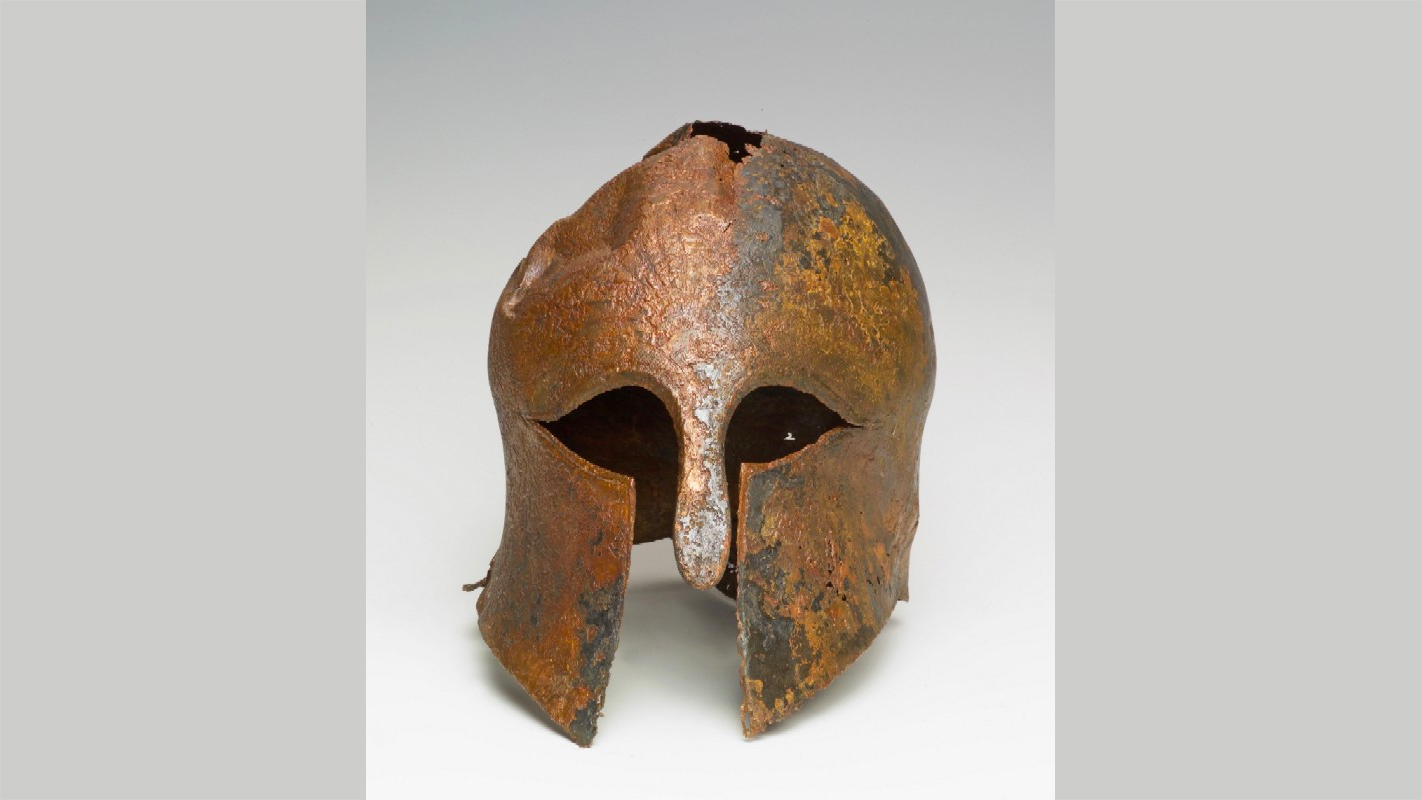Ancient helmet worn by soldier in the Greek-Persian wars found in Israel

A well-preserved ancient Greek helmet likely worn by a soldier during a war with the Persians has been found in Haifa Harbor in Israel.
The 2,500-year-old helmet was found by a Dutch ship in 2007 and was turned over to the Israel Antiquities Authority (IAA) marine unit, according to an IAA statement.
"The helmet is a Corinthian type named after the city of Corinth in Greece where it was first developed and produced in the 6th century [B.C.]" according to the archaeologists, noting that the helmet became popular and was used throughout the Mediterranean.
Related: In photos: Spartan temple and cultic artifacts discovered
"The helmet was expertly fabricated from a single sheet of bronze by means of heating and hammering" the statement said. "This technique made it possible to reduce its weight without diminishing its capacity for protecting the head of a warrior."
The "helmet probably belonged to a Greek warrior stationed on one of the warships of the Greek fleet that participated in the naval conflict against the Persians who ruled the country at the time" Kobi Sharvit, director of the IAA marine unit, said in the statement
Greek-Persian wars
At the time that the warrior was patrolling the seas, Persia controlled an empire that spanned the Middle East. The Persians tried to invade Greece twice. The first invasion was stopped in 490 B.C., when the Persians were defeated near Athens, at the Battle of Marathon. Marathon races are named after a legendary event that supposedly took place after the Battle of Marathon, when a soldier named Pheidippides ran to Athens, which was about 25 miles (40 km) away, to bring news of the Greek victory. After delivering the news, Pheidippides supposedly died of exhaustion.
Sign up for the Live Science daily newsletter now
Get the world’s most fascinating discoveries delivered straight to your inbox.
During the second invasion, the Persians were slowed down by a Spartan-led force at the Battle of Thermopylae in 480 B.C. and were forced out of Greece in 479 B.C. The Battle of Thermopylae is particularly famous as a force of 300 Spartans, led by the Spartan king Leonidas, who fought to the death against the Persians.
Related: 10 epic battles that changed history
In the decades after 479 B.C., the Greeks went on the offensive, launching attacks against Persia throughout the eastern Mediterranean. The helmet may have been worn by a Greek soldier participating in one of those attacks. Hostilities between the Greeks and Persians would continue up until Alexander the Great conquered the Persian Empire in 330 B.C.
Originally published on LIve Science.

Owen Jarus is a regular contributor to Live Science who writes about archaeology and humans' past. He has also written for The Independent (UK), The Canadian Press (CP) and The Associated Press (AP), among others. Owen has a bachelor of arts degree from the University of Toronto and a journalism degree from Ryerson University.









